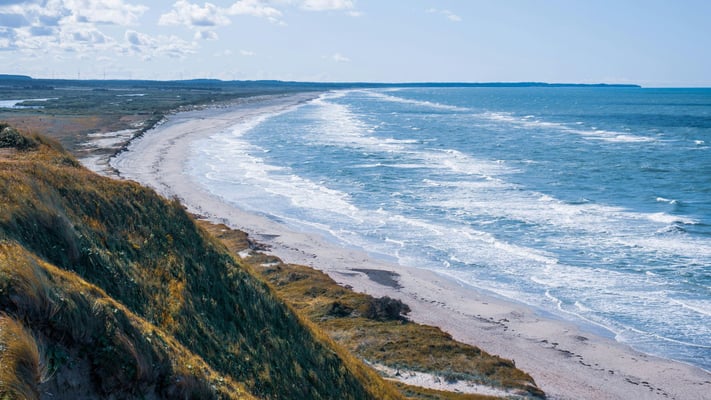‘We’ve Lost Our fishing grounds’: Anger Grows In Samoa Over Manawanui Shipwreck Fallout

Nearly a year after the Royal New Zealand Navy vessel Manawanui ran aground. It sank off the south coast of Upolu. Frustration continues to mount in Samoa as affected communities await compensation and clarity over the shipwreck’s future.
New Zealand paid NZ$6 million (WST$10 million) to the Samoan government as compensation for the maritime disaster, but residents of Tafitoala village, the area most directly impacted, say they have yet to see any funds.
Resident Fagailesau Afaaso Junior Saleupu said a recent meeting between the New Zealand High Commission, Samoa’s Ministry of Natural Resources and Environment, and local representatives offered three potential options for distributing compensation, either through the Samoan government, district authorities, or another local mechanism. However, he said the meeting was brief and left little room for community input.
“It’s not enough time for us to raise questions and give our opinions about the problem,” Fagailesau said, quoted RNZ.
He added that many locals believe the Samoan government should distribute the compensation directly to affected families and businesses, warning that the NZ$6 million payment is insufficient to cover the long-term environmental and economic damage caused by the wreck.
Villagers in Tafitoala remain restricted by a two-kilometre exclusion zone around the wreck, cutting them off from their regular fishing grounds.
“We’re eating tinned fish,” Fagailesau said. “We are the people that are really affected,” quoted RNZ.
Samoa’s government has indicated that it will finalise the compensation process after the national budget is passed later this month.
Meanwhile, New Zealand Foreign Minister Winston Peters told Pacific Waves that the Samoan government is leading the compensation process and that there has been no attempt to conceal information about the environmental impact of the wreck, as reported by RNZ.
“It’s not a matter of being covert or secretive about it,” Peters said. “It’s analysing what we’re dealing with,” RNZ quoted.
Peters also reiterated that New Zealand had been transparent in its dealings and continued to work closely with Samoa to address the situation.
“This terrible tragedy happened, which we massively regret — no one more than me,” he said, quoted RNZ.
However, Samoa surf guide Manu Percival, who assisted in the clean-up using his own boat fuel, said neither government had provided adequate compensation or communication.
“It’s real crazy. No one’s got any compensation,” Percival said. “It’s kind of getting tossed between two different government departments,” as quoted by RNZ.
Percival criticised both governments, calling the NZ$6 million payout “an absolute joke” and insisting that New Zealand should remove the wreck from the reef.
To date, no environmental impact report on the Manawanui sinking has been made public, leaving many locals increasingly concerned about both ecological and economic consequences.
Nearly a year after the Royal New Zealand Navy vessel Manawanui ran aground. It sank off the south coast of Upolu. Frustration continues to mount in Samoa as affected communities await compensation and clarity over the shipwreck’s future.
{% module_block module...Nearly a year after the Royal New Zealand Navy vessel Manawanui ran aground. It sank off the south coast of Upolu. Frustration continues to mount in Samoa as affected communities await compensation and clarity over the shipwreck’s future.
New Zealand paid NZ$6 million (WST$10 million) to the Samoan government as compensation for the maritime disaster, but residents of Tafitoala village, the area most directly impacted, say they have yet to see any funds.
Resident Fagailesau Afaaso Junior Saleupu said a recent meeting between the New Zealand High Commission, Samoa’s Ministry of Natural Resources and Environment, and local representatives offered three potential options for distributing compensation, either through the Samoan government, district authorities, or another local mechanism. However, he said the meeting was brief and left little room for community input.
“It’s not enough time for us to raise questions and give our opinions about the problem,” Fagailesau said, quoted RNZ.
He added that many locals believe the Samoan government should distribute the compensation directly to affected families and businesses, warning that the NZ$6 million payment is insufficient to cover the long-term environmental and economic damage caused by the wreck.
Villagers in Tafitoala remain restricted by a two-kilometre exclusion zone around the wreck, cutting them off from their regular fishing grounds.
“We’re eating tinned fish,” Fagailesau said. “We are the people that are really affected,” quoted RNZ.
Samoa’s government has indicated that it will finalise the compensation process after the national budget is passed later this month.
Meanwhile, New Zealand Foreign Minister Winston Peters told Pacific Waves that the Samoan government is leading the compensation process and that there has been no attempt to conceal information about the environmental impact of the wreck, as reported by RNZ.
“It’s not a matter of being covert or secretive about it,” Peters said. “It’s analysing what we’re dealing with,” RNZ quoted.
Peters also reiterated that New Zealand had been transparent in its dealings and continued to work closely with Samoa to address the situation.
“This terrible tragedy happened, which we massively regret — no one more than me,” he said, quoted RNZ.
However, Samoa surf guide Manu Percival, who assisted in the clean-up using his own boat fuel, said neither government had provided adequate compensation or communication.
“It’s real crazy. No one’s got any compensation,” Percival said. “It’s kind of getting tossed between two different government departments,” as quoted by RNZ.
Percival criticised both governments, calling the NZ$6 million payout “an absolute joke” and insisting that New Zealand should remove the wreck from the reef.
To date, no environmental impact report on the Manawanui sinking has been made public, leaving many locals increasingly concerned about both ecological and economic consequences.










Leave a Comment